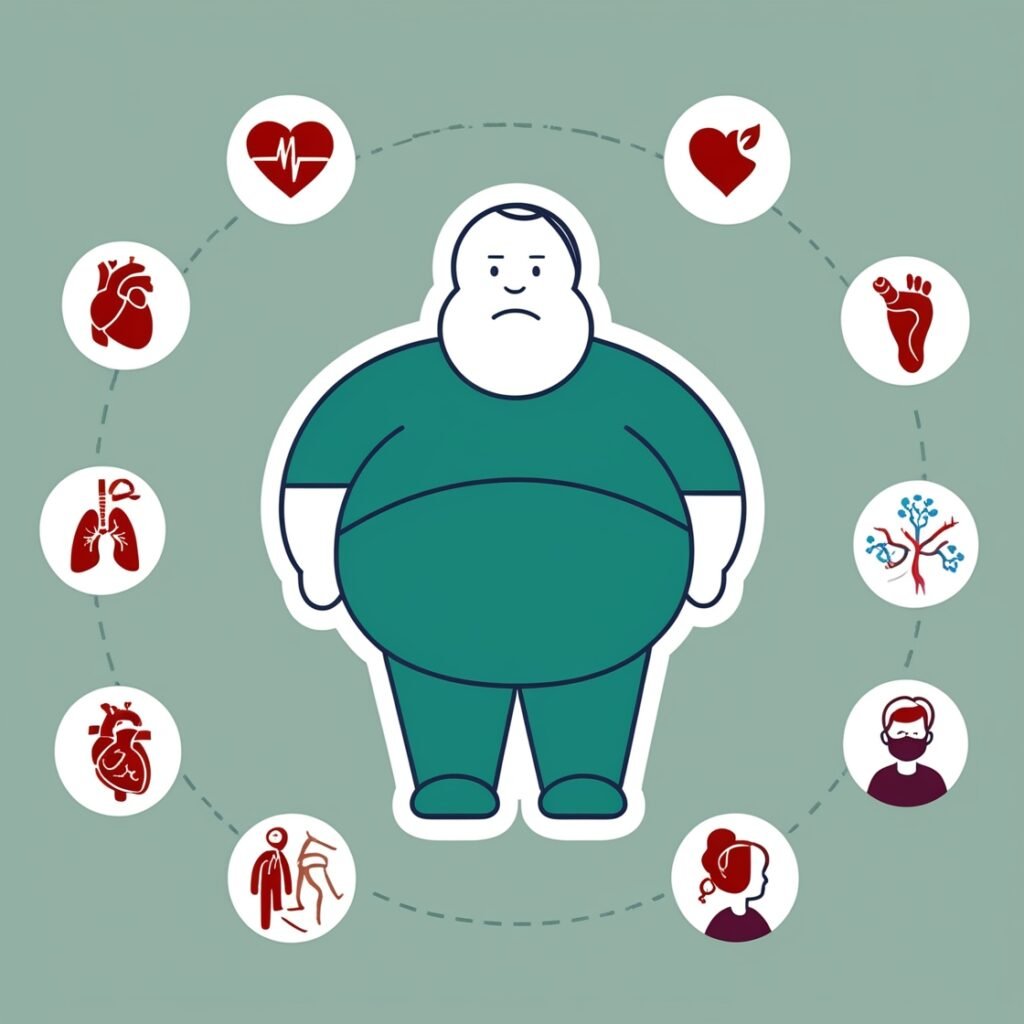Childhood obesity is a growing global health concern that affects millions of children, leading to serious health complications that can persist into adulthood. Preventing childhood obesity is crucial for a healthier future and requires a holistic approach that involves parents, educators, healthcare providers, and communities. In this article, we’ll explore actionable strategies for preventing childhood obesity, focusing on nutrition, physical activity, and lifestyle habits.
Table of Contents
Introduction to Prevention of Childhood Obesity
Childhood obesity is a condition where excessive body fat negatively affects a child’s health or well-being. It is defined as a Body Mass Index (BMI) at or above the 95th percentile for children of the same age and sex. Childhood obesity increases the risk of chronic diseases such as diabetes, heart disease, and even certain cancers later in life. With about 18.5% of children aged 2 to 19 years in the United States classified as obese, the need for effective prevention strategies has never been more critical.
Prevention of Childhood Obesity
Statistics on Childhood Obesity
According to the World Health Organization (WHO), the global prevalence of childhood obesity has increased dramatically over the past four decades. Here are some critical statistics:
| Region | Percentage of Obese Children (2020) |
|---|---|
| North America | 20.5% |
| Europe | 12.5% |
| Asia | 5.8% |
| Africa | 3.4% |
Source: World Health Organization (WHO), 2022
These figures highlight the urgency of tackling childhood obesity at a global level. In the United States, the Centers for Disease Control and Prevention (CDC) reports that 1 in 5 children aged 6–19 years is obese, with Hispanic and Black children disproportionately affected.
Understanding the Causes of Childhood Obesity
Childhood obesity results from a combination of genetic, behavioral, and environmental factors. Key contributors include:
- Poor Dietary Habits: Diets high in processed foods, sugary beverages, and low in fruits and vegetables.
- Lack of Physical Activity: Increased screen time and a sedentary lifestyle.
- Family Environment: Parents’ eating habits and lifestyle play a critical role.
- Psychosocial Factors: Emotional stress, low self-esteem, and bullying can also lead to overeating.
- Socioeconomic Status: Limited access to nutritious foods and safe exercise facilities can make it difficult for families to maintain a healthy lifestyle.
Importance of Early Prevention of Childhood Obesity
Early prevention of obesity is crucial, as eating and activity habits form during childhood and are challenging to change in adulthood. Research indicates that children with obesity are five times more likely to remain obese in adulthood, underscoring the importance of instilling healthy habits early in life. Prevention efforts can minimize the risk of chronic diseases and promote lifelong well-being.
Strategies for Parents for Prevention of Childhood Obesity

A. Promote Healthy Eating Habits
Parents can help their children make nutritious choices by:
- Creating a Balanced Plate: Incorporate vegetables, lean proteins, whole grains, and fruits in meals.
- Reducing Sugary Snacks and Beverages: Substitute sugary drinks with water, milk, or natural fruit juices.
- Establishing Regular Meal Times: A regular eating schedule can prevent overeating and help children develop a routine.
B. Encourage Physical Activity
The American Heart Association recommends that children engage in at least 60 minutes of physical activity per day. Here are ways to integrate more movement into your child’s day:
- Limit Screen Time: Encourage outdoor play or structured activities like dance, sports, or swimming.
- Set an Example: Active parents often raise active children. Participate in physical activities together as a family.
- Organize Play Dates: Involve other families to make physical activities social and fun.

C. Ensure Adequate Sleep
Studies indicate that children who get adequate sleep are less likely to develop obesity. Sleep helps regulate hunger hormones, which reduces cravings and overeating. Create a consistent sleep routine and limit stimulating activities before bedtime.
Community Involvement in the Prevention of Childhood Obesity
Community support is essential for providing safe spaces and access to healthy food options. Local governments and community organizations can contribute by:
- Building Safe Parks and Recreation Centers: Facilities should encourage children to play and exercise safely.
- Providing Accessible Fresh Foods: Community gardens and farmer’s markets can improve access to affordable fruits and vegetables.
- Organizing Health Workshops: Educate families about the importance of nutrition and exercise through community events and classes.
School-Based Initiatives
Schools play a pivotal role in promoting a healthy lifestyle, as children spend a significant amount of time there. Effective school-based initiatives include:
- Nutrition Education: Teaching students about the benefits of a balanced diet and the consequences of poor eating habits.
- Healthy School Meals: Providing nutritious meals and limiting access to sugary and processed foods in cafeterias.
- Physical Education Programs: Daily physical education classes encourage exercise and help children learn various sports and activities.

The Role of Healthcare Providers
Healthcare providers can detect early signs of obesity and provide guidance on prevention strategies. Regular check-ups and BMI monitoring can help identify at-risk children. Providers can also work with families to create personalized health plans, covering aspects like diet, exercise, and psychological support.
Long-Term Health Consequences of Childhood Obesity
Failing to address childhood obesity can lead to serious health consequences that extend into adulthood. These may include:
- Type 2 Diabetes: Once rare in children, type 2 diabetes is increasingly diagnosed in obese children.
- Heart Disease: Obesity can lead to high blood pressure and cholesterol, increasing heart disease risk.
- Psychological Issues: Children with obesity are more likely to experience depression, anxiety, and low self-esteem.
| Health Issue | Increased Risk Due to Obesity |
|---|---|
| Type 2 Diabetes | 20-30% |
| Heart Disease | 25-35% |
| Depression & Anxiety | 15-20% |
Source: CDC, 2022
Prevention of Childhood Obesity: The Conclusion
Preventing childhood obesity requires a multifaceted approach, where parents, communities, schools, and healthcare providers all play an integral role. Through balanced nutrition, regular physical activity, and healthy lifestyle choices, we can reduce the prevalence of obesity among children and give them a foundation for a healthier future.
References
- World Health Organization. (2022). Obesity and Overweight. Retrieved from https://www.who.int/news-room/fact-sheets/detail/obesity-and-overweight
- Centers for Disease Control and Prevention. (2022). Childhood Obesity Facts. Retrieved from https://www.cdc.gov/obesity/data/childhood.html
- American Heart Association. (2022). Recommendations for Physical Activity in Children. Retrieved from https://www.heart.org/en/healthy-living/fitness




